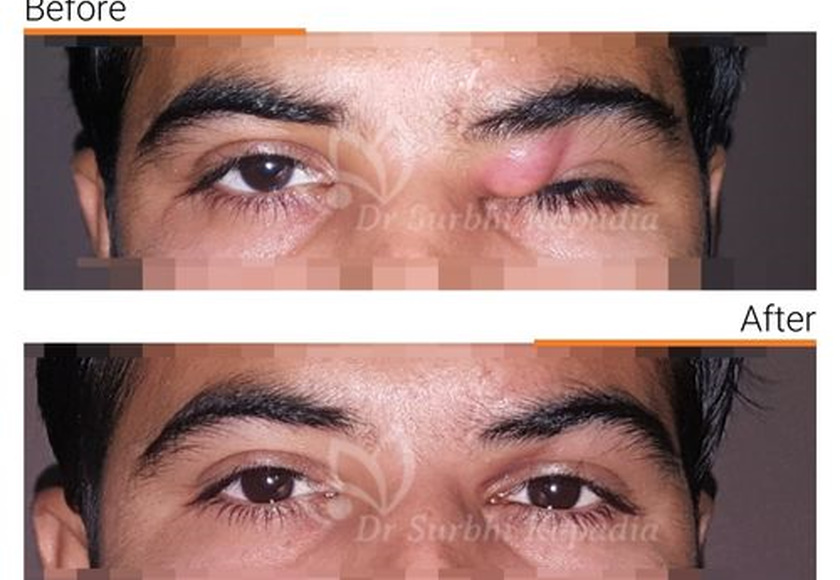|
Getting your Trinity Audio player ready...
|
India, as a country, has several challenges that it faces, out of which healthcare accessibility poses a major defiance.
Why?
Healthcare accessibility in India is hindered by financial constraints, unequal distribution, infrastructure shortages, lack of insurance, care quality concerns, and infrastructure issues, particularly in rural areas.
If we go by the numbers, only 37.2% of the population is covered by any health insurance, out of which 78% are covered by public insurance companies. Such staggering numbers give rise to questions pertaining to eye care accessibility, and that is what we are going to be discussing in the following blog. So, without any further ado, let’s begin.
Importance of Eye Care Accessibility
Understanding the importance of eye care accessibility is crucial for addressing this global challenge and ensuring that everyone has the opportunity to maintain optimal vision. Here are some key reasons why eye care accessibility is of utmost importance:
1. Health and Well-being
Access to regular eye exams and timely treatment is essential for preventing and managing various eye conditions and diseases. Undiagnosed and untreated vision problems can lead to serious complications, including irreversible vision loss. By promoting eye care accessibility, we can safeguard individuals’ ocular health and enhance their overall well-being.The relationship between eye vision and sleep is intricate and vital for maintaining optimal visual health. Quality sleep is crucial for various aspects of eye function, including ocular surface health, visual acuity, and overall eye comfort.
2. Educational Opportunities:
Clear vision is integral to learning and academic success. Children with uncorrected vision problems may struggle in school, experience difficulties reading and comprehending material, and fall behind their peers. By ensuring access to vision correction services, we empower children to thrive academically, reach their full potential, and pursue future educational and career opportunities.
3. Economic Empowerment:
Vision impairment can have significant economic consequences, both at the individual and societal levels. People with untreated vision problems may face challenges securing employment, performing job-related tasks, and advancing in their careers. Moreover, vision loss often necessitates costly medical interventions and rehabilitation services, placing financial strain on individuals, families, and healthcare systems. By providing affordable and accessible eye care, we can enhance economic productivity, reduce healthcare expenditures, and alleviate financial burdens on affected individuals and communities.
4. Social Inclusion:
Clear vision is essential for social interaction, communication, and participation in everyday activities. Individuals with vision impairments may experience social isolation, difficulties navigating their surroundings, and barriers to fully engaging in social and recreational opportunities. By promoting eye care accessibility, we foster social inclusion, empower individuals to connect with others and cultivate supportive and inclusive communities.
5. Public Health Impact:
Eye health is a critical component of public health, with far-reaching implications for population health outcomes and healthcare systems. Addressing vision problems at the population level through preventive measures, early detection, and timely intervention can reduce the prevalence of vision-related disabilities, preventable blindness, and associated health disparities. By prioritizing eye care accessibility as a public health imperative, we promote equitable access to essential eye care services and contribute to healthier, more resilient communities.
Challenges Faced in Eye Care Accessibility
Access to essential eye care services is a significant challenge worldwide, with barriers stemming from socioeconomic, geographical, cultural, and systemic factors. These multifaceted challenges hinder timely and adequate eye care access. Understanding these complexities is vital for crafting effective strategies to improve accessibility and tackle vision health disparities. Let’s delve into some key hurdles:
1. Financial Barriers:
Affordability is a major concern when it comes to accessing eye care services. Many individuals, especially those from low-income backgrounds, face financial constraints that prevent them from seeking essential eye exams, purchasing prescription glasses, or undergoing corrective surgeries. The high costs associated with eye care, including consultation fees, diagnostic tests, and treatment procedures, pose a significant barrier to access for vulnerable populations.
2. Geographical Constraints:
Geographic location plays a critical role in determining access to eye care services. Rural and remote communities often lack adequate infrastructure and resources for eye care, including eye care clinics, trained professionals, and diagnostic equipment. As a result, residents of these areas face challenges in accessing essential eye care services due to long distances to the nearest eye care facility and limited transportation options.
3. Awareness and Education:
Lack of awareness about the importance of eye health and preventive care is a significant barrier to accessing eye care services. Many individuals, particularly in underserved communities, may not fully understand the implications of untreated vision problems or know where to seek help. Cultural beliefs, language barriers, and misconceptions about eye health further contribute to low awareness levels and may deter individuals from seeking timely eye care.
4. Shortage of Trained Professionals:
The availability and distribution of eye care professionals, including ophthalmologists, optometrists, and opticians, are uneven, with shortages often observed in underserved regions and low-resource settings. This shortage of trained professionals limits individuals’ access to timely and quality eye care services, particularly in areas with high demand and limited healthcare infrastructure.
5. Infrastructure and Resources:
Inadequate infrastructure and resources pose significant challenges to delivering effective eye care services. Many eye care facilities, especially in resource-limited settings, lack essential equipment, such as diagnostic tools and surgical instruments, and may operate with outdated technology.
6. Technological and Digital Divides:
While telemedicine and digital health solutions have the potential to improve access to eye care services, there are challenges related to technological and digital divides. Limited access to reliable internet connectivity and digital infrastructure in certain regions may hinder individuals’ ability to engage with telemedicine platforms for remote consultations or follow-up care.
4 Ways to Combat Eye Care Accessibility Challenges
By implementing targeted strategies and initiatives, we can improve access to essential eye care services and promote equitable vision health for all. Here are some effective ways to combat eye care accessibility challenges:
1. Financial Assistance Programs:
Establishing financial assistance programs, such as subsidies or vouchers, can help alleviate the financial burden of eye care services for low-income individuals. These programs can cover the costs of eye exams, prescription glasses, contact lenses, and corrective surgeries, making eye care more affordable and accessible to those in need.
2. Mobile Eye Clinics:
Deploying mobile eye clinics to rural and underserved areas can bring essential eye care services directly to communities, overcoming geographical barriers and increasing access for individuals who may have limited transportation options. Mobile clinics can provide comprehensive eye exams, vision screenings, and basic treatment services, reaching populations that may otherwise go without care.
3. Telemedicine and Remote Consultations:
Expanding telemedicine and remote consultation services enable individuals to access eye care professionals virtually, regardless of their location. Telemedicine platforms can facilitate remote diagnosis, monitoring, and follow-up care, reducing the need for in-person visits and overcoming geographical constraints. Investing in telemedicine infrastructure and promoting digital literacy can enhance access to eye care for underserved populations.
4. Workforce Development:
Investing in workforce development programs expands the pool of trained eye care professionals and improves the distribution of services, particularly in underserved areas. Initiatives such as scholarships, training programs, and incentives for eye care professionals to practice in rural or remote regions can help address workforce shortages and improve access to care.
FAQs About Eye Care Accessibility
Eye care accessibility is important because it ensures that individuals can receive timely and adequate eye care services, preventing vision loss, promoting overall health, and enhancing quality of life.
Vulnerable populations, including low-income individuals, rural communities, and marginalized groups, are often most affected by barriers to eye care accessibility due to financial constraints, geographical limitations, and lack of resources.
Common signs that may indicate the need for an eye exam include blurred vision, eye pain or discomfort, frequent headaches, difficulty seeing at night, and changes in vision clarity or color perception.
Yes, there are financial assistance programs available to help individuals who cannot afford eye care services. These programs may offer subsidies, vouchers, or other forms of financial aid to cover the costs of eye exams, glasses, contact lenses, and surgeries.
You can contribute to improving eye care accessibility in your community by raising awareness about the importance of eye health, advocating for policies that prioritize eye care, supporting organizations that provide free or low-cost eye care services, and volunteering your time and resources to local eye care initiatives.
Conclusion
In conclusion, ensuring accessibility to eye care services is crucial for promoting overall health and well-being. By addressing barriers such as financial constraints, geographical limitations, and lack of awareness, we can improve access to essential eye care for all individuals.
Dr. Surbhi Kapadia stands out as a leading ophthalmologist in Vadodara, dedicated to enhancing eye care accessibility in the community. Through her commitment to patient care, innovative approaches, and community outreach initiatives, Dr. Kapadia strives to make a positive impact on vision health and empower individuals to maintain optimal eye health.
With her expertise and passion for improving accessibility, Dr. Surbhi Kapadia exemplifies excellence in ophthalmology and serves as a beacon of hope for those in need of quality eye care services in Vadodara and beyond.
![]()






